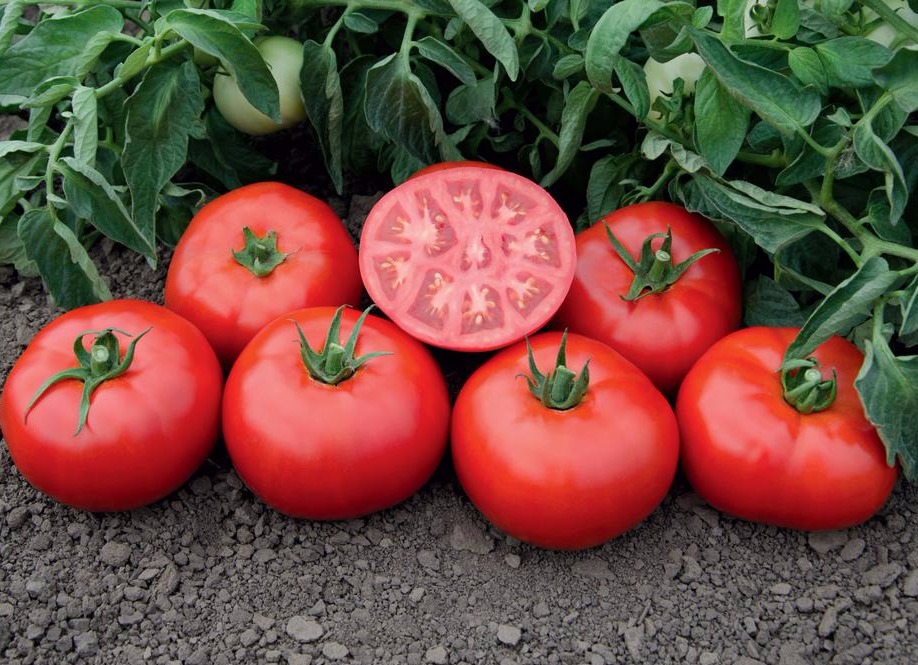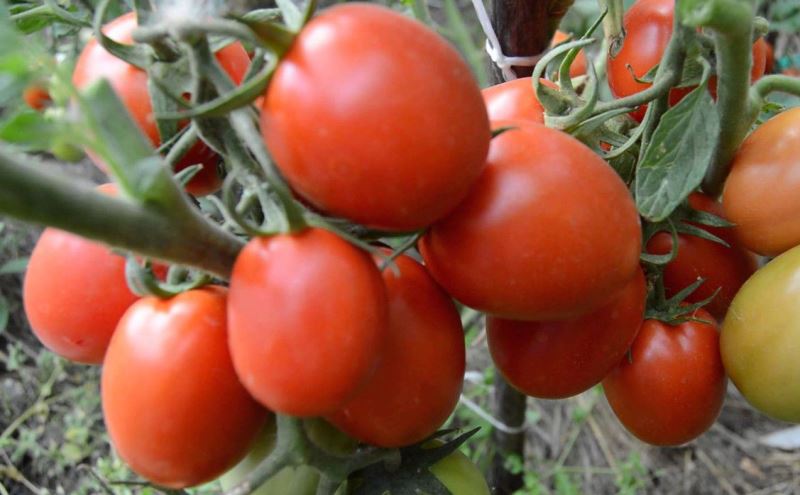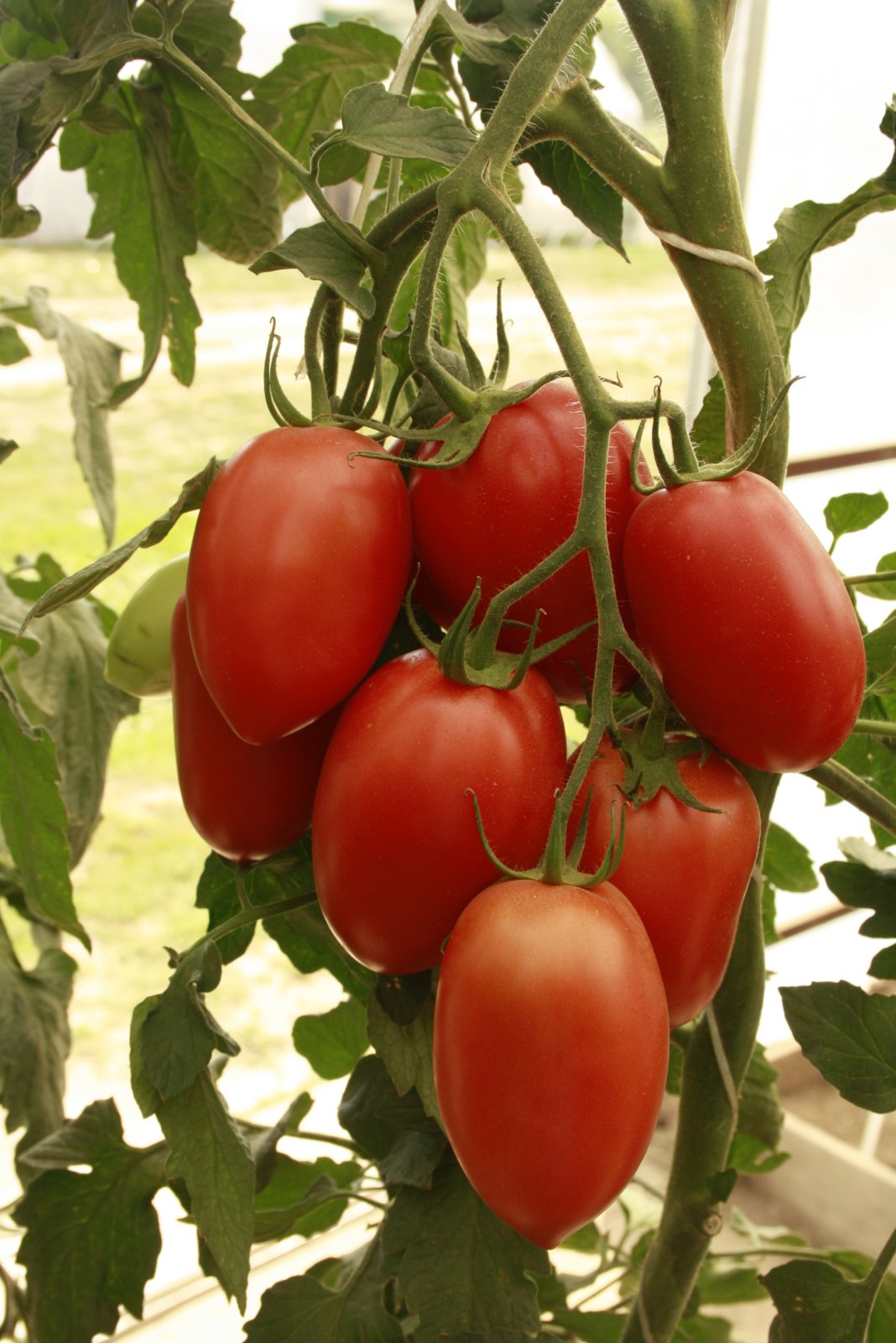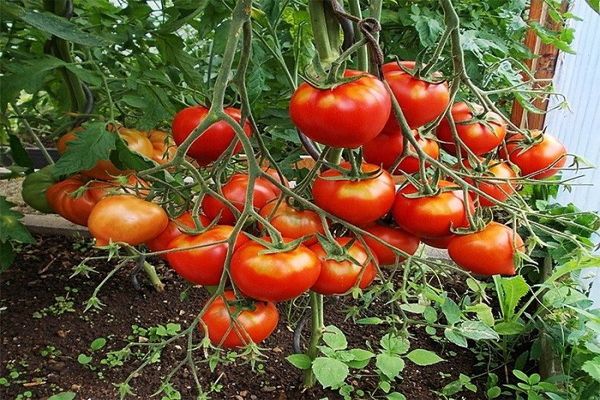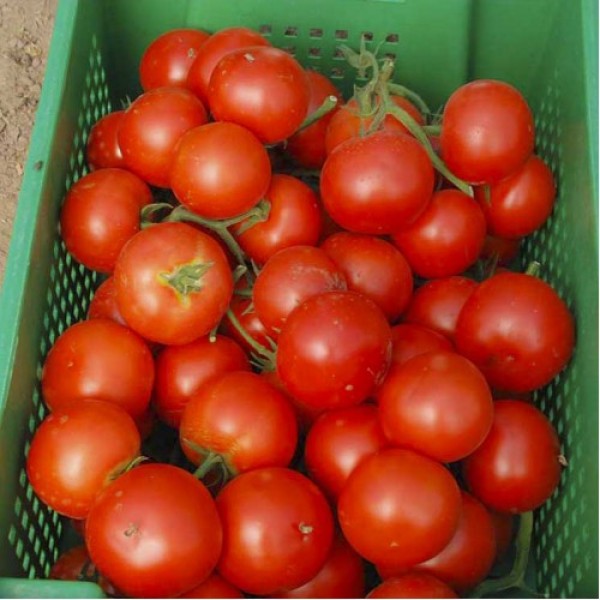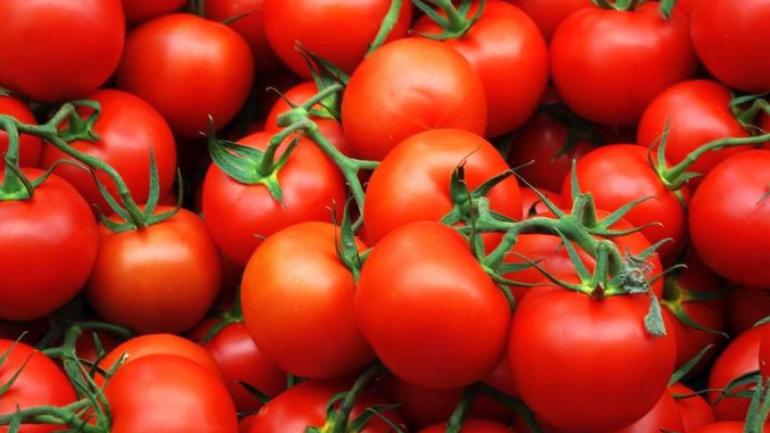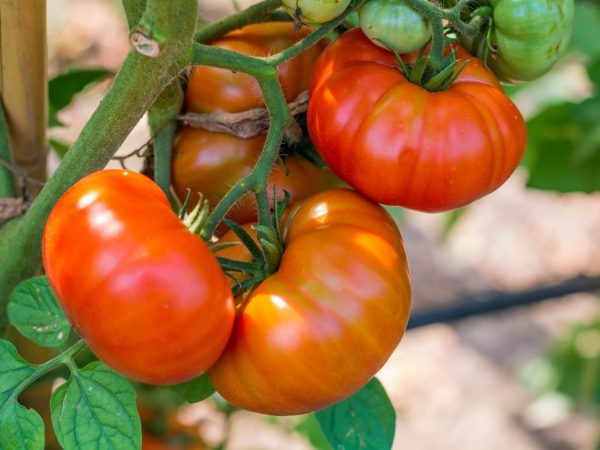Tomato Tomsk is a novelty of the Dutch selection. Despite his short-term presence in the domestic market, he has already managed to recommend himself from the best side.
Main characteristics of the variety
Description of the variety and characteristics of the tomato Tomsk:
- Tomsk F1 - large-fruited mid-season beef-tomato hybrid, technical maturity of which occurs 70-75 days after transplanting;
- Beef tomato - large-fruited or steak tomatoes weighing more than 150 grams;
- Tomato determinant Tomsk reaches up to 1 meter. The plant is powerful, well leafy. The stems are thick and strong;
- The fruits are large - more than 200-300 grams, round or flat-round, smooth. The pulp is juicy, moderately fleshy. The color is deep red, without dark spots near the stalk. The skin is dense, shiny. Large proportions of seed chambers. The taste of tomatoes is sweet, with a distant sourness, a pleasant aroma. They perfectly tolerate long-distance transportation. They are distinguished by an impressive content of lycopene and sugars. Torn off, they are stored for up to 14 days without loss of taste, composition of nutrients and appearance. Use the fruits for fresh use, for cooking, for processing and canning. They make excellent ketchups, tomato juices, sauces. The only thing is that tomatoes are not suitable for whole-fruited pickling;
- Tomsk tomatoes are suitable for growing in film, glass greenhouses and in the open field. The best results in terms of yield were obtained in “street” conditions;
- The yield is good - 4.5-5 kg / m²;
- It tolerates temperature changes perfectly.
Agrotechnics
The principles of growing tomatoes Tomsk f1 are similar to other varieties, do not have certain nuances.
The seeds of hybrid varieties of tomatoes do not need hardening and disinfection procedures. They already have a very high immunity to diseases of Solanaceous crops and pests.
It will be useful to conduct:
- Sorting. It will allow you to get rid of weak, empty seeds at the initial stage. To do this, you need a saline solution (take a teaspoon of salt in a glass of slightly warm water), in which the seeds are placed for 20 minutes. Poor quality seed will float, and good seed will remain on the bottom. After the procedure, the seeds must be washed with clean water and dried on a paper towel;
- Germination tests - germination of seeds in wet gauze. For this, a plate with low sides is taken, on which gauze is placed, soaked in water. Seeds are evenly spread on top of cheesecloth and covered with a thin layer of cotton wool soaked in water. Moisten them if necessary, to prevent excessive moisture and dryness.
The soil mixture for planting seedlings is added:
- Peat. An indispensable component that gives looseness to the soil, absorbs moisture and perfectly holds it back;
- Sand or perlite. It is imperative to use only coarse, clean river sand. Used as a baking powder;
- Leafy land. Endows the soil with lightness and looseness;
- Humus. Only well rotted;
- Sawdust - an excellent substitute for peat and sand.
Seeds of Tomsk are sown in prepared soil in the first half of March, covered with foil and removed to a warm place before sprouts appear. After that, the film is removed, and the seedlings are placed in a well-lit room. There should be regular watering.
The pick is carried out after the formation of the first 2 leaves. A late pick is possible, after 3-4, but there is a possibility of poor engraftment of the tomato and its weak immunity.
Forty-day seedlings can be planted in open ground, according to the scheme - 40x60 cm.
Tomato Tomsk loves loose, porous, light, fertile and living soil, capable of absorbing moisture well and retaining it, with a normal level of acidity.
Required conditions for growing outdoors:
- No more than 2-3 plants per 1 sq. m;
- Normalization of flowers;
- Pinching of inflorescences, leaving 4-5 ovaries on them, and best of all 3 - then the fruits will be large, uniform;
- Regular removal of weeds;
- Steying;
- Removing the lower leaves;
- Regular watering, as the top fertile layer of the earth dries up, using only warm, settled barrel water.
Despite its good frost resistance, tomato Tomsk f1 belongs to heat-loving crops. However, temperatures above + 32 ° C negatively affect the viability of pollen grains and the efficiency of photosynthesis.
The Tomsk tomato variety needs to provide a high level of illumination so that all stages of vegetative growth pass with maximum efficiency, since the tomato is very light-requiring.
Tomsk belongs to the variety of tomatoes that require a mandatory garter to the support and pinching.
Top dressing is not a prerequisite for growing tomatoes, and many summer residents ignore it, but it certainly affects the yield of tomatoes. The better the plant is nourished, the better the result will be. You can't overdo it either.
Top dressing:
- On day 21 after planting, the seedlings are fertilized with nitrogenous substances that promote the growth of greenery. After 3 days, the bushes under the root are watered with a urea solution (for 10 liters of water - 1 tbsp. L.);
- When the first flowers appear, the plant is fed with potassium. Chicken droppings in the form of a solution are perfect (for a bucket of water 0.5 liters of droppings);
- When a brush of flowers appears, they are fed with potassium humate;
- Superphosphate is used 14 days after 3 feeding.
If necessary, feeding can be carried out during the period of fruit formation.
Advantages and disadvantages
Tomsk f1, like any other tomato variety, has its pros and cons.
Positive features of this variety:
- Excellent taste characteristics;
- Large fruit sizes;
- High resistance to pests and diseases;
- Ease of growing;
- Keeping quality for a long time without loss of taste and appearance;
- The possibility of growing in a greenhouse and exhaust gas;
- Adaptation to severe weather conditions;
- A very large amount of useful substances in the composition of the fruit.
The disadvantage is that the collected seeds from grown tomatoes will not give a good harvest, since this is a hybrid.
The tomato is definitely interesting, and you should definitely try to grow it on your site. The only thing is that the seeds are not easy to find. But for those who are really interested in them, this will not be a significant obstacle.
